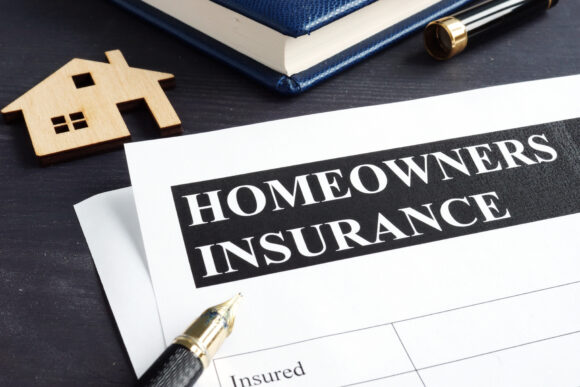Original article can be found HERE.

A new American Property Casualty Insurance Association (APCIA) survey of over 1,000 U.S. homeowners who have a homeowners insurance policy, reveals a majority of insured homeowners have not taken important steps to ensure their insurance coverage is keeping pace with rising inflation and increased building costs, which could leave policyholders underinsured if catastrophe strikes.
Only 30% of insured homeowners have purchased more insurance or increased coverage limits to compensate for rising building costs, according to the survey conducted online by The Harris Poll. Additionally, among insured homeowners who completed renovations or remodels during the pandemic, less than half (40%) updated their home insurance to account for those changes.”
It is critical that homeowners make sure they have the right amount and right types of coverage during this period of significant inflation, but unfortunately our survey shows that many individuals may not be properly prepared,” said Karen Collins, assistant vice president of personal lines at APCIA. “Our survey found that about two thirds of homeowners may be without key additional coverages, such as annual inflation adjustment, extended replacement cost, and building code/ordinance coverage, that can better protect them in these challenging market conditions.”
In 2020 and 2021, U.S. insurers paid out $176 billion for natural catastrophe claims alone, the highest total for a two-year period for natural catastrophe claims. Inflation, recent supply chain issues, and increased demand for skilled labor and construction materials following unprecedented natural disasters in the last two years have contributed recently to a significant increase in the costs to rebuild homes and businesses. From December 2019 through December 2021, the price of construction materials rose by 44 percent. These trends are impacting post-disaster recovery efforts across the U.S. – leading to higher costs and longer reconstruction timeframes.
“It is important to conduct an annual review of your insurance policy with your insurer or agent to help ensure you have enough coverage to repair or rebuild your home should disaster strike, but only 30 percent of insured homeowners updated their insurance policy less than a year ago,” added Collins. “Homeowners should be aware that rebuilding costs are increasing, and they should take steps now to update their coverage and mitigate against potential damage.”
Other key findings of the APCIA survey include:
- There is a significant knowledge gap over whether insurance covers the cost to rebuild or the market value of the home. Sixty-four percent of insured homeowners indicated they are not sure or believe their homeowners coverage limits are based on the real estate market value of their home rather than the rebuilding cost. Most residential property insurance policies cover the cost of rebuilding a home, with recommended coverage limits typically based on estimated reconstruction costs for similar interior and exterior features, size, and finishes.
- Sixty-three percent of insured homeowners say they have not added or are not sure if they have added annual inflation adjustment coverage, which automatically adjusts your policy each year to account for inflation.
- Sixty-seven percent of insured homeowners say they have not added or are not sure if they have added extended replacement cost coverage to their policy, which increases the coverage available to rebuild your home if labor and materials costs skyrocket after a disaster.
- Sixty-nine percent of insured homeowners say they have not added or are not sure if they have added ordinance coverage for new energy or building code upgrades, which provides additional coverage to account for higher costs associated with rebuilding to up-to-date building codes.
- Only 20 percent of insured homeowners say they created or updated a home inventory in the event of a loss less than a year ago, and 25 percent say they have never completed a home inventory.
“As climate change is causing more severe and frequent natural catastrophes, this should be a wake-up call to homeowners to pick up the phone and call their insurer or agent to discuss their insurance policy and make sure they have the coverages they need,” said Collins. “Too often people overestimate their preparedness for natural disasters and other emergencies, and this can lead to gaps in preparedness and insurance coverage.”
To keep from being surprised in the recovery process following a natural disaster, APCIA urges homeowners to talk with their agent or company about adding the following key coverage features:
- Replacement cost coverage – pays an amount necessary to rebuild the home with construction materials of like kind and quality and replace your personal belongings, without deducting depreciation.
- Automatic inflation guard – automatically adjusts your coverage amount at each renewal time to help keep up with rising costs; however, during periods of extreme inflation, it remains important to review coverage limits.
- Building code/ordinance coverage – increases coverage to help comply with any new building code or green energy ordinances.
- Extended replacement cost coverage – increases coverage available to rebuild your home when labor and material costs skyrocket after a natural disaster.
- Additional living expense (ALE) coverage – optional higher limits may help cover hotel and food costs if a longer timeframe is needed to rebuild your home.
APCIA also recommends creating an inventory of your home’s contents so you can quickly and easily account for all your belongings and report a loss to your insurer if disaster strikes. Many insurers have free tools available to help their policyholders create a home inventory or you can take photos and videos using your smartphone. Be sure to save your inventory to a safe, accessible place, like the cloud.

